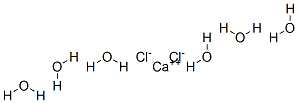Hafnium oxide , 99.9%(MetalsBasis remove ZR), ZR <0.5% , 12055-23-1
Synonym(s):
Hafnia
CAS NO.:12055-23-1
Empirical Formula: HfO2
Molecular Weight: 210.49
MDL number: MFCD00003565
EINECS: 235-013-2
| Pack Size | Price | Stock | Quantity |
| 1g | RMB60.00 | In Stock |
|
| 2G | RMB103.20 | In Stock |
|
| 5g | RMB199.20 | In Stock |
|
| 10G | RMB311.20 | In Stock |
|
| 25g | RMB703.20 | In Stock |
|
| 50G | RMB1263.20 | In Stock |
|
| others | Enquire |
PRODUCT Properties
| Melting point: | 2810 °C |
||||||||||||||
| Density | 9.68 g/mL at 25 °C(lit.) |
||||||||||||||
| refractive index | 2.13 (1700 nm) |
||||||||||||||
| solubility | insoluble in H2O |
||||||||||||||
| form | powder |
||||||||||||||
| color | Off-white |
||||||||||||||
| Specific Gravity | 9.68 |
||||||||||||||
| Water Solubility | Insoluble in water. |
||||||||||||||
| Crystal Structure | Monoclinic |
||||||||||||||
| crystal system | Monoclinic |
||||||||||||||
| Merck | 14,4588 |
||||||||||||||
| Space group | P21/c |
||||||||||||||
| Lattice constant |
|
||||||||||||||
| Exposure limits | ACGIH: TWA 0.5 mg/m3 NIOSH: IDLH 50 mg/m3; TWA 0.5 mg/m3 |
||||||||||||||
| InChIKey | CJNBYAVZURUTKZ-UHFFFAOYSA-N |
||||||||||||||
| CAS DataBase Reference | 12055-23-1(CAS DataBase Reference) |
||||||||||||||
| EPA Substance Registry System | Hafnium oxide (HfO2) (12055-23-1) |
Description and Uses
Hafnium is a shiny, silvery, ductile metal and resistant to corrosion. The physical properties of hafnium metal samples are markedly affected by zirconium impurities, especially the nuclear properties, as these two elements are among the most difficult to separate because of their chemical similarity. Hafnia is used in optical coatings and as a high-k dielectric in dynamic randomaccess memory (DRAM) capacitors. Hafnium (IV) oxide is a colourless, inert solid and has been reported as one of the most common and stable compounds of hafnium. It is an electrical insulator. Hafnium dioxide is an intermediate in some processes that give hafnium metal. It reacts with strong acids and strong bases. It dissolves slowly in hydrofluoric acid. At high temperatures, it reacts with chlorine in the presence of graphite or carbon tetrachloride and forms the hafnium tetrachloride. Hafnium-based oxides are currently important materials to replace silicon oxide as a gate insulator because of its high dielectric constant. Hafnium (Hf) is found in association with zirconium ores, production based on zircon (ZrSiO4) concentrates which contain 0.5%–2% hafnium. Hafnium has extensive applications in industries especially because of its resistance to corrosion. Different compounds of hafnium used in ceramics industry are hafnium boride, hafnium carbide, hafnium nitride, hafnium oxide, hafnium silicate, and hafnium titanate. Hafnium-based oxides are currently leading candidates to replace silicon oxide as a gate insulator in fieldeffect transistors.
Hafnium(IV) oxide is used as Intermediates, Paint additives and coating additives, metal Products. And it is also used in optical coatings, as a refractory material in the insulation of such devices as thermocouples.
Safety
| Symbol(GHS) |  GHS07 |
| Signal word | Warning |
| Hazard statements | H315-H319 |
| Precautionary statements | P264-P280-P302+P352-P337+P313-P305+P351+P338-P362+P364-P332+P313 |
| Safety Statements | 22-24/25 |
| WGK Germany | 3 |
| TSCA | Yes |
| HS Code | 28259085 |




